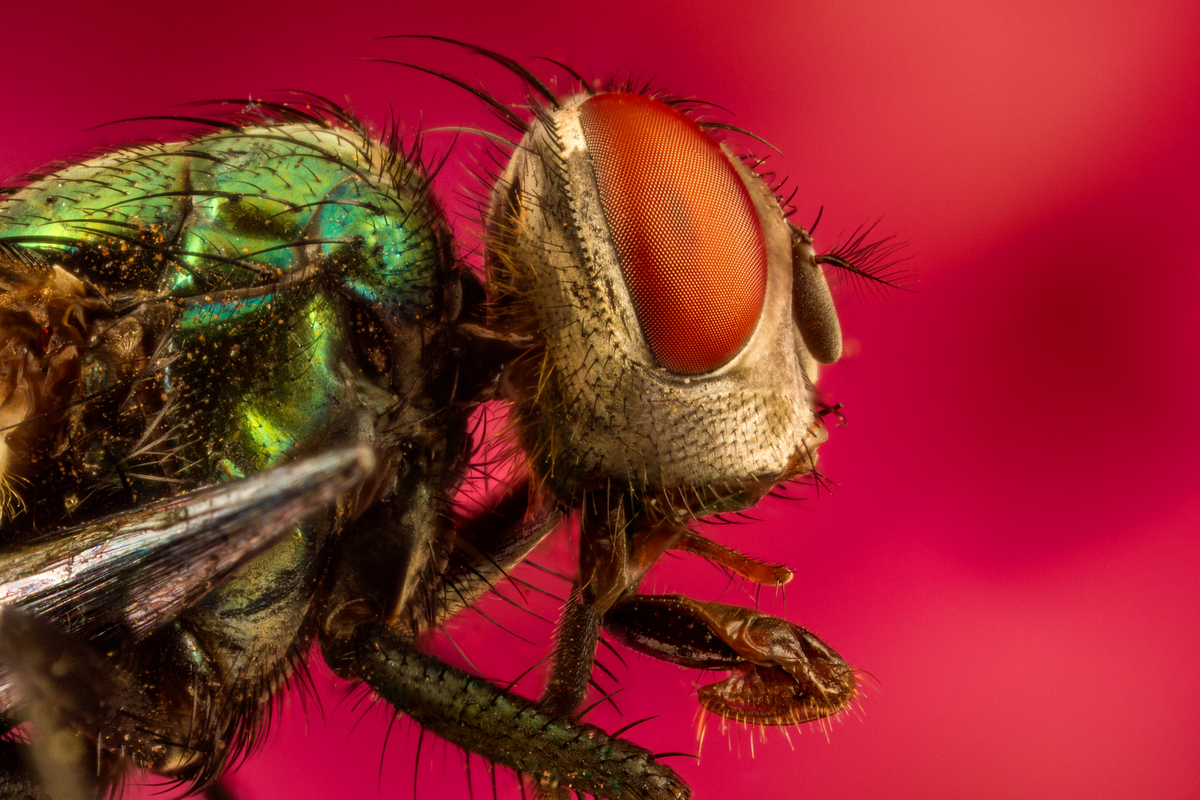Let’s talk about those unwanted house guests. No, not your in-laws. Bugs!
Creepy crawlers always seem to find their way into your home no matter what you do. They sneak in through doors, leaky pipes, windows, and cracks in the floors, set up shop, and don’t even have the common decency to pitch in on the rent! Their hiding places are so good they’re basically hide-and-seek champs.
But don’t bug out! We are going to help you get rid of indoor insects once and for all and keep them where they belong: outside.
Bugs Bunny
Insects are the largest arthropods and are known for their segmented bodies, jointed legs, and exoskeletons. Their bodies are separated into three parts, the head, thorax, and abdomen.
Insects are generally known for their ability to carry and spread disease. Bedbugs, mosquitoes, and fleas are all common spreaders and are generally met with great opposition (and an intentional spray bottle) from humankind. There is a reason they are referred to as pests!
But not all those that buzz are evil. Many bugs are actually beneficial to humans. Insects pollinate, produce substances useful to humans, control other species of insects, and supply other animals with a source of food. They are also commonly studied in biology and ecology and have helped inform scientific knowledge of genetics! We are all about saving the bees, even if we don’t really like the stings.
Entomologists estimate anywhere between five and ten million insect species on the planet right now. And it can often seem like all of them are located inside the perimeter of your home…

Insector Gadget
Bugs want to get in your house for resources like food, water, and shelter. Can you blame them? Your house is awesome. They just want to get in on the action and make their lives a little easier. To be honest, bug-proofing your home is impossible. Insects are going to sneak in no matter how hard you try, but that doesn’t mean you have to make it easy.
The goal is to increase reinforcements that keep insects out and, if they breach, make the inside inhospitable. Some common invaders are spiders, moths, ants, fleas, centipedes, cockroaches, wasps, dust mites, the house centipede, and of course, the dreaded bed bug. Flea and tick sightings increase if you have a cat or dog, so stay extra vigilant.
Pest Control Is Best Control
One of the simplest ways to keep bugs from getting into your home is to make sure you are using a fine-mesh screen on your windows or screen doors. The small holes in fine-mesh screens are hard for insects to break through.
Regularly inspect these screens once you install them for holes and tears. If you notice any, patch or replace the screen to keep bugs from sneaking in. Make sure you get a snug fit on the corners and sides.
The same advice applies to doors and entryways. If there are holes or cracks in or around these areas, caulk or repair them as soon as possible to prevent an infestation.
Weather-stripping will also help keep bugs from sneaking in under the door. If you can see the light or feel air coming in from your doors, then it won’t be long before bugs come marching through those same gaps. Door sweeps can help combat this on the bottom of doors, and door seals can protect the tops and sides.
To fight off a bed bug infestation: get mean and get clean. Wash those sheets, couch cushions, and more in hot water. Scrub every inch of the bed frames in your home and go wild with a vacuum cleaner over every inch of your home. Mattresses are a common bed bug nest zone, and while you can clean them, you might need to buy a new one.
Lost and Foundation
When was the last time you took a stroll around the exterior of your home and looked for cracks in the foundation? Probably never because that is a weird thing to do for no reason. But insects are doing this constantly. A crack in the foundation of your home is a welcome sign for bugs and insects.
Grab a caulking gun and examine your fortress. Seal any cracks before moving on to your dryer vent, gas line, cable wire, and any other spots that might have tiny gaps from things being fed into your home. Spray foam is also a good alternative to caulking.
You can also install mesh barriers over vents that lead into the attic or other areas to keep insect-carrying critters out.
In-N-Outside Burger
Since you are already outside filling holes, you might as well clean up the yard. Firewood, mulch, leaf piles, trash, and recycling bins, the list goes on and on, and all are breeding grounds and hiding spots that harbor insects.
Make sure all of these things are well away from your home’s foundation. Landscape and mow your lawn frequently and drop the clippings a good distance from the home. If you get firewood, inspect it for insects before bringing it into your home. Make sure to remove annual plants when their growing season is over and trim back plants that grow year-round.
Prune any branches or shrubs that come in contact with your house as they act as highways for bugs and insects to get into your home. If you have any standing water outside your home, remove these areas as they are breeding grounds for mosquitoes.
Bugging Out
Bugs are in the home for food and shelter. Make it harder on them to get food by cleaning your kitchen and pantry frequently. Different types of bugs like different types of foods. Flour, baking mixes, crackers, pasta, fruits, nuts, and some spices will all attract hungry bugs. Make sure these items are stored in tightly sealed containers. Ditto for pet food. Bugs don’t discriminate!
Keep your floors, and counter clean and free of food crumbs. Stay on top of the trash and recycling. If you can smell, so can bugs and insects. Empty early and often and rinse everything you place in the recycling bin.
Once you empty the trash and recycling, try to clean the insides of the bins. Food and liquid have a habit of spilling into the bottom of both, leaving sticky stains that insects love to feed on. Do the same for the outdoor bins if they are near your house or in the garage.
Clean any dishes you put in the sink as soon as you can, and definitely don’t leave them in there overnight. Clean the microwave and toaster frequently. It’s also a best practice to just make sure your house is as clean as you can make it. Keeping things off the floors and cleaning will make it hard for bugs to hide!
Water You Waiting For?
Bugs and insects love food almost as much as they love water. Silverfish, springtails, and centipedes are especially drawn to damp places. Any moisture will attract these and other bugs to your home, even something as seemingly benign as condensation.
To combat moisture seekers, fix leaky faucets, drains, and pipes as soon as you spot them and check pipes frequently. Inspect your laundry and air conditioner for leaks, too.
If you have a basement or crawlspace, run a dehumidifier if it is prone to dampness or takes on water during heavy rain. Do the same in your attic and make sure your drainage system is effective.
Chronic Pest Pains
You’ve taken all the aforementioned steps, but those pesky pests have still breached your defenses and wound up in your home. Now what?
There are millions of different types of bugs and insects, and they all react differently to defenses, but there are a few that are good to know.
Ants and Uncles
Ants are very common in the home. There are chemical solutions, sure, but natural prevention is preferred if you have pets or kids.
Ants don’t like certain smells like vinegar so try cleaning with it. It disinfects and dis-insects! Soapy water like dish soap will also kill ants and remove their chemical trail to prevent other ants from following them into your home.
Ants also hate pepper, mint, cinnamon, red chili powder, and turmeric. Sprinkle these spices where you see ants and watch them scatter. Fresh cucumber peels will surprisingly do the same but are more noticeable.
Oil Spills
There are a couple of oils that will kill several types of insects. Peppermint oil is a great way to make your home smell great and repel ants, spiders, and mosquitoes. Neem oil works great on over 200 species of insects. Spray this on indoor plants or on windows to keep pests out.
Oh, Buggar!
A few other natural solutions include lavender, pyrethrin, diatomaceous earth, hanging flypaper and insect traps, and/or bug zappers.
The important thing to know is when you’ve been beaten. If none of these options work, it’s time to call a pest professional. Bed bugs, termites, and relentless carpenter ants are all bugs that need to be taken care of by the pros. It’s costly but worth it to protect your home and family!
For more ways to live an easier life, check out Bulbhead.com.
